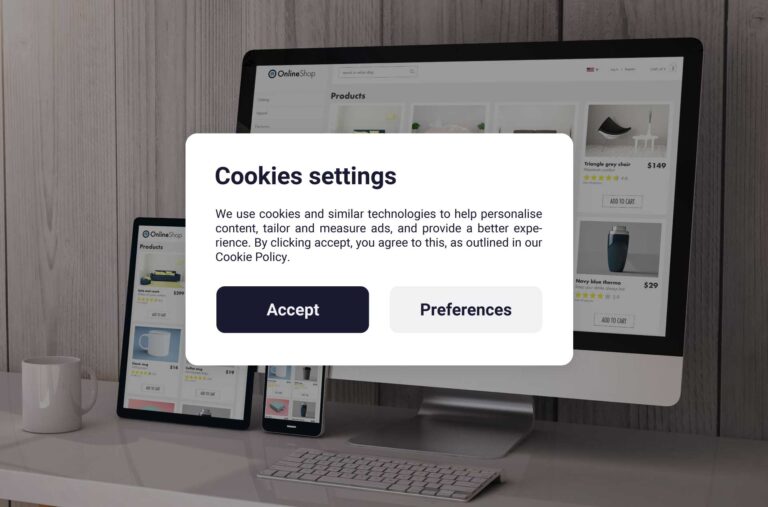Most direct-to-consumer brands are different from Silicon Valley Bank (SVB).
Almost all of them have almost nothing in common.
But there’s a lesson to be learned from the recent crisis that SVB faced in March 2023. One that can help eCommerce companies think about how they handle their assets and capital and forecasts: inventory, costs, and demand.
Here’s the takeaway: over-extending yourself as a business can create risk. Good forecasting and planning can help to de-risk high costs and possible disasters.
So where does the eCommerce space fit in?
Let’s start with the SVB tale.
The Silicon Valley Bank story
A quick summary of what happened recently with SVB will paint a picture for us.
SVB provides banking services to technology startups and venture capital firms. Like most banks, they receive deposits from businesses and individuals and then use that money to loan out – generating revenue from interest payments.
Of course, they also pay some of that interest to the depositors – and SVB keeps the difference between those incoming and outgoing rates as their earnings.
Now the reality of investing is that the value of assets varies over time. That was one of the issues that created risk, and SVB couldn’t get in front of that.
To simplify the concept of changing value:
- A $100 deposit with a 1.0% interest rate for Acme, Inc. was used to invest with a 5.0% interest rate return back to SVB.
- Other opportunities arise where a bank could get 10% for the same $100, which decreases the value of the original investment package. For example, in the last 12 months, federal bonds have substantially increased interest rates!
- So while the bank may have put in $100 with an expected return, they may only be able to sell that packaged investment asset for $95.
Beyond the changing nature of the value of investment assets, another risk presented itself.
The bank overextended itself because of the rapid growth it’d experienced:
“Driven by the boom in venture capital funding, many of Silicon Valley’s customers became flush with cash over 2020 and 2021. Between the end of 2019 and the first quarter of 2022, the bank’s deposit balances more than tripled (300%) to $198 billion…. This compares with industry deposit growth of “only” 37% over the period.” (Source)
This growth created expectations, and that massive amount of money needed to be invested.
SVB invested the capital in long-term investments that needed 10 years to mature, taking away liquidity and locking up cash. They didn’t expect businesses to withdraw their deposits to the extent they did.
Because of the decreased value of the formerly mentioned investment assets, word got out about needing to gather funding – creating fear and a mass withdrawal.
And SVB couldn’t cash out that much and liquidate their investments.
How does this relate to DTC
SVB collapsed due to significant exposure to high-risk loans – plus a seeming lack of proper risk management practices.
eCommerce brands may have faced a similar situation with the rapid increase in shipping costs and delays in their supply chain over the last few years.
The cost of shipping containers skyrocketed.
The duration from ordering a shipment of inventory to receiving that at warehouses – ready for last-mile fulfillment – became exorbitant.
In addition, the COVID-19 pandemic created a massive uptick in online orders as we all sat at home and waited for safety.
As you probably already learned: “In Q2 2020, e-commerce experienced a 44.5 percent increase in year-over-year sales compared to the overall retail sector, which experienced a 3.5 percent decline.” According to the US Census Bureau.
So many brands did what they thought they must: look into the future and estimate how much inventory they would need based on current demand.
Since demand was high, prices for fulfillment were high, and the time to deliver was long – this was a recipe for potential massive over-ordering. It’s a problem studied in the classroom.
And that’s what many brands faced: a massive amount of inventory arriving at an extremely high cost for shipping and storage. And then, a precipitous drop in demand left them with a significant imbalance on their financial statements.
In a way, this is a similar type of over-exposure that SVB faced – due to risk in forecasting the future state of costs, income, and the economy.
Analyzing DTC brand behavior
Over the last few years, DTC brands have faced significant challenges regarding inventory planning, ordering, and supply chain costs.
In response, many have shifted their strategies and implemented new tactics to better manage their inventory, reduce costs, and have better visibility into the future.
One significant change is the shift towards a just-in-time (JIT) inventory system: only ordering products as needed, rather than ordering large amounts of inventory upfront.
Clearly, this reduces overstocking risks plus minimizes the cost of storing inventory. Forbes shared a study by McKinsey, finding that JIT inventory systems can reduce inventory costs by up to 50%.
DTC brands have also started to leverage tools and new technologies to improve their inventory management.
New inventory management software provides real-time visibility into their inventory levels, plus track sales data to make more informed purchasing decisions.
Analysis of this information helps to de-risk over-ordering and optimize inventory levels and costs.
This projection often includes forecasting – typically done via time-series analysis.
A better way to forecast?
Changing behavior is important for brands to de-risk high-cost and order issues.
But changing technology can be just as important… if not more so.
For example, attempting to forecast inventory demand to do accurate ordering is an industry-wide pain.
This can be done with Excel formulas. It can be done with robust Python scripts.
But with the vast proliferation of AI and machine learning, new tools can help do more sophisticated analysis that considers not just historical purchase data and costs of goods but other factors.
This includes zero and first-party data from beyond just transactions, third-party data from Census data or other economic sources, and so on.
eCommerce AI has many use cases.
One of these is helping to illuminate the future a little more clearly to help brands prepare accordingly.
Takeaways
Direct-to-consumer brands have revolutionized the way consumers shop for products.
But merchants can over-extend financially in a number of ways: by over-ordering inventory; by not accurately forecasting demand; by failing to consider the lead times required to manufacture and ship their products; etc.
Merchants need to be mindful of the financial risks that come with over-ordering inventory. In the same way, SVB needs to be aware of the dangers of locking up its capital in long-term investments.
With accurate forecasting, brands and banks can better manage their cash flow and avoid overextending.
Using AI and machine learning is critical, and tools like Aidaptive have the operational underpinning to model the future much more accurately than an analyst working alone.
To learn more about Aidapitve’s eCommerce AI, contact our team!


